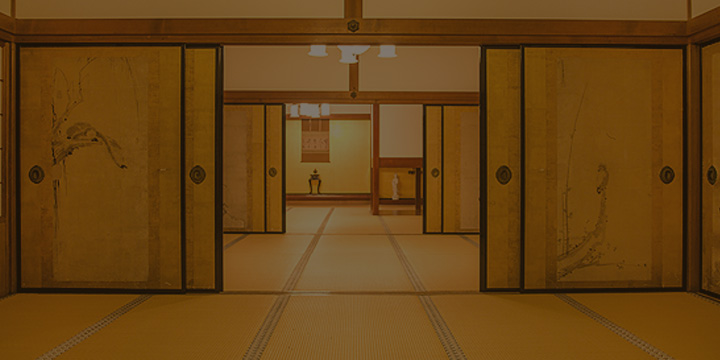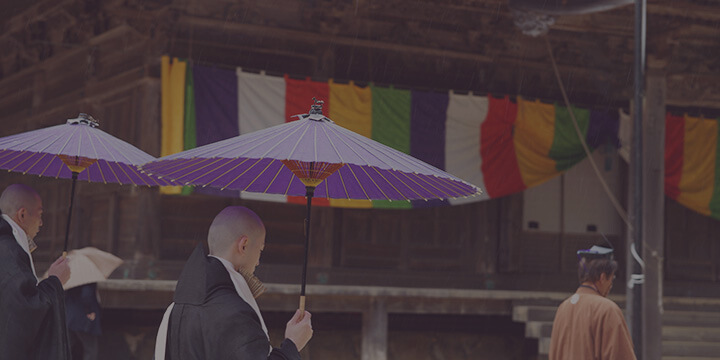What is Kongobuji Temple?
The Charms of Kongobuji
Koyasan is a sacred place for Japanese Buddhism, first opened in the Heian Period by Kobo Daishi.
The name “”Kogobuji””conveys, “”Kongobu-rokaku-issai-yuga-yugi kyo,”” or “”The Sutra of All Yogas and Yogis of the Pavilion with the Vajra-Top.””
Koyasan has, beginning with the main hall at 60m east to west and 70m north to south, guarded by various other buildings, the area and grace of 48.295 square meters.
Story of the Founding of Koyasan
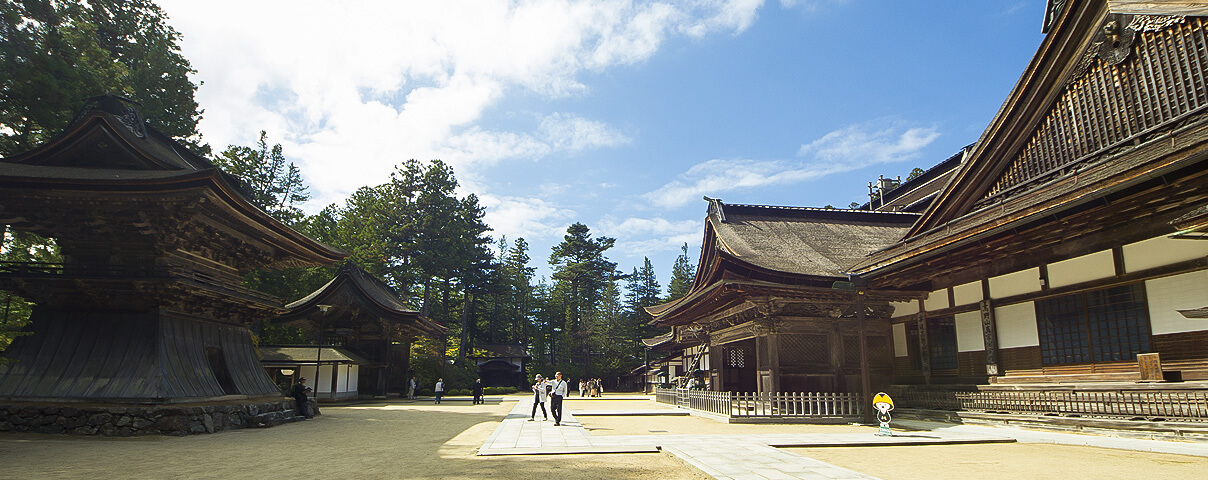
It has been said for ages that Koyasan was discovered by Kobo Daishi, far away from the capital. The story goes that Kobo Daishi finished with 2 year study in China, and upon leaving home from the shore of Mingzhou, praying to find the location to erect a temple, he threw a sanko (ceremonial tool) that he was holding.
Kobo Daishi, seeking the sanko, met a single bizarrely shaped huntsman while entering Uchigun of current day Yamato.
Holding a bow and arrow in his hand, he was leading two dogs, one black and one white. Kobo Daishi was lead by the two dogs, and crossing the Kinokawa River and entering the steep mountains, he encountered a woman saying, “I am the god of this mountain. I shall cooperate with you.” As they proceed to where the mountains were not steep, there was suddenly a quiet land.
Thus, stuck in a pine tree there, they found the sanko which had been thrown from the shore in China, and since this mountain would be an appropriate place for Esoteric Buddhist teachings, Kobo Daisho decided to open his temple here.
What is the Issan Temple Grounds?
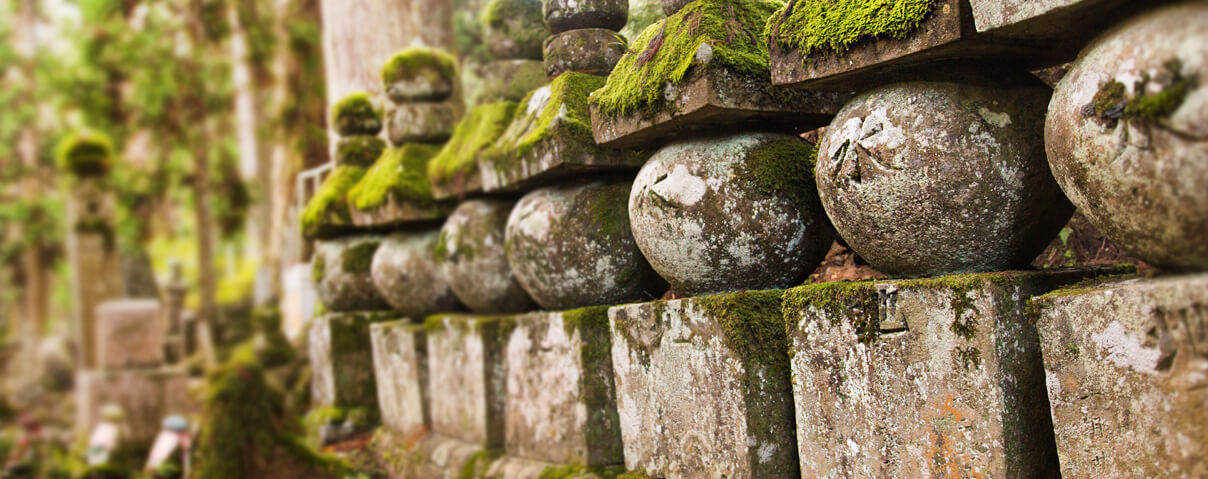
In the case of the main temple Kongobuji, this does not only refer to Kongobuji Temple, but the entirety of Koyasan.
Usually, a single structure comes to mind when one mentions a temple, and these grounds can be referred to as the temple, but Koyasan takes the name “Issan Temple Grounds,” as temple grounds cover Koyasan, and the entirety of Koyasan is a temple.
Well, you may be wondering where the main temple is. The main temple of Koyasan is the towering temple, “Kondo” the main temple of Issan. Nearly all major events at Koyasan are held at Kondo.
The temples dotting the grounds are called the “Tatchuu jiin” or “subtemples.” Adoring the virtue of Daishi, the entirety of Koyasan has been made the Daiji Main Kongobuji Temple, and was built as a small temple in the mountains. Currently, 117 temples exist, of which 52 are used as quarters, and offer lodging to all visitors to the temple.
Kobo Daishi
Posthumous name based on the life of Kukai, given by the Emporer Daigo in the year 921.
Shizen Daitoku
Born in Enryaku 23 (84 AD). After the death of Kobo Daishi (Jowa 1, March 21, at the age of 30, he succeeded at the testament of Kobo Daishi for over 50 years, completed the Yugito Pagoda, various temples such as the Mirokudo, Shingondo, Junteido, and the Bell Tower, as well as the Konbondaito and Saito Pagodas that Kobo Daishi wished for.
Sanko
A tool for Esoteric Buddhists, it is also called a Sankosho.
It is an item likened to that of a weapon in Indian legends, representing the Buddhists teachings of ridding oneself of desire and the mind seeking enlightenment.
To Everyone, From the Chief Abbot
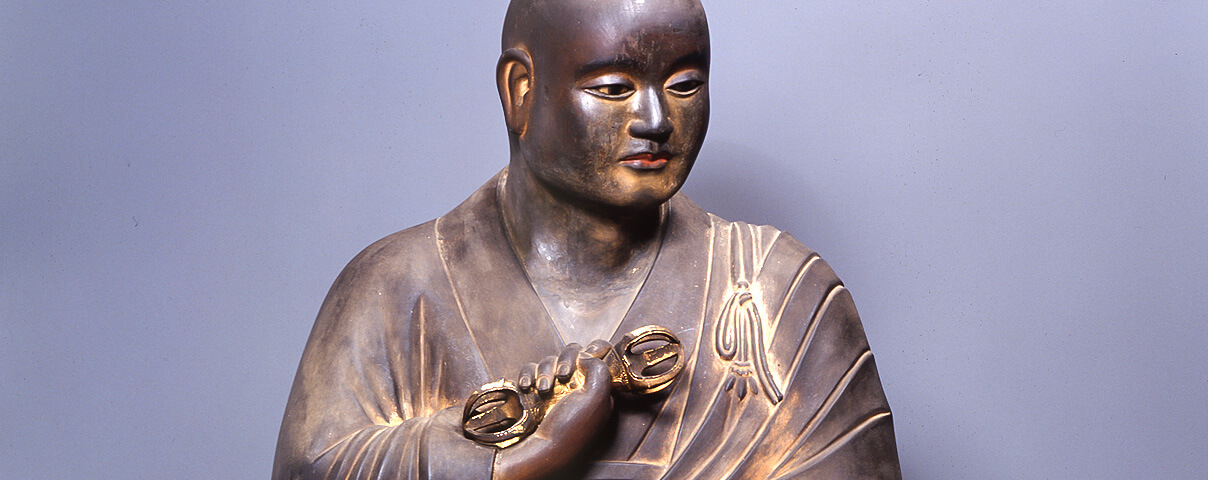
In the case of the main temple Kongobuji, this does not only refer to Kongobuji Temple, but the entirety of Koyasan.
Usually, a single structure comes to mind when one mentions a temple, and these grounds can be referred to as the temple, but Koyasan takes the name “Issan Temple Grounds,” as temple grounds cover Koyasan, and the entirety of Koyasan is a temple.
Well, you may be wondering where the main temple is. The main temple of Koyasan is the towering temple, “Kondo” the main temple of Issan. Nearly all major events at Koyasan are held at Kondo.
The temples dotting the grounds are called the “Tatchuu jiin” or “subtemples.” Adoring the virtue of Daishi, the entirety of Koyasan has been made the Daiji Main Kongobuji Temple, and was built as a small temple in the mountains. Currently, 117 temples exist, of which 52 are used as quarters, and offer lodging to all visitors to the temple.
Chief abbot’s history
Chief abbot of Shingon Sect on Mount Koya High priest Keihou Nakanishi
- BirthBorn September 3, 1935
- Entering the PriesthoodJuly 16, 1948: after entering priesthood at Tentokuin and training under Bokusho Kanayama, practices tonsure on this day
- Formal CertificationJuly 26, 1948: formal announcement of entry into priesthood
- Academic CareerMarch 15, 1956: graduates Koyasan University
- RankDecember 1, 2003: appointed to high priest
- Career as Chief PriestJuly 13, 1965: appointed as chief priest of Shakamon’in, Koyasan (current)
April 1, 2007: appointed as chief priest of Hojuin, Koyasan (current)
| Positions held | Inauguration | Retirement |
|---|---|---|
| Koyasan University Comptroller | April 1, 1970 | March 31, 1985 |
| Research panel member, Ho’e group, Go-onki Daiho’e secretariat | July 15, 1980 | March 31, 1985 |
| Missionary research group member | April 1, 1991 | |
| Kongobuji lead monk and executive officer Services and flower arrangement head |
July 5, 1991 | July 4, 1994 |
| Garan administrator | July 31, 1992 | August 31, 1992 |
| Kongobuji lead monk and executive officer Honzan sect services head |
July 5, 2000 | July 31, 2003 |
| Dean of Koyasan University | April 1, 2007 | Present |
| Goshichi-nichi-mishiho | Serves in 1991, 1997, 2001 |
